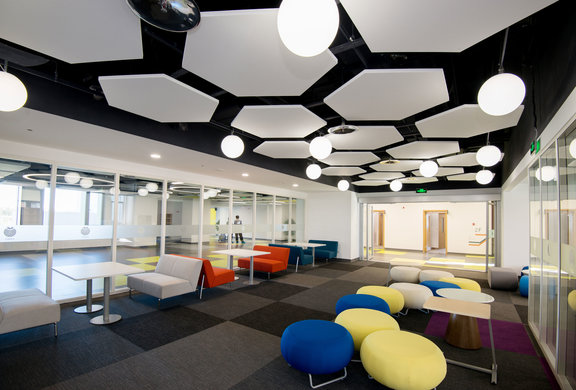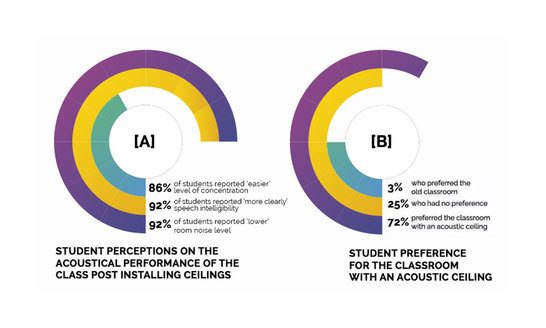
Acoustic Design and Learning Outcomes in Schools
Evidence-Based Design (EBD) research was conducted (over 10 years) across China in support of the work by the Green Campus Work Group. It investigated the relationship between architecture, acoustics and school learning in primary and middle schools. The mission of a school building is to provide a place for teachers to teach and students to learn and this requires both good acoustic and visual comfort since these are the primary means of education (hear and see).
EBD cases were developed in more than a dozen schools linking the architectural acoustic design with both student and teacher satisfaction and perceptions for good vs poor design elements, specifically the inclusion of acoustic treatment to affect the reverberation and background noise in classrooms.
By comparison of student perceptions, we found that 92% of students reported easier/as easy' level of concentration. 92% reported ' more clearly/as clearly' speech intelligibility, and 86% reported 'lower/as low' room noise level (A).
What was surprising was that even primary and middle school students noticed and valued good acoustic design and accordingly, 72% indicated a preference for the classroom with an acoustic ceiling, compared to 25% ho had no preference, and 3% who preferred the old classroom (B).
